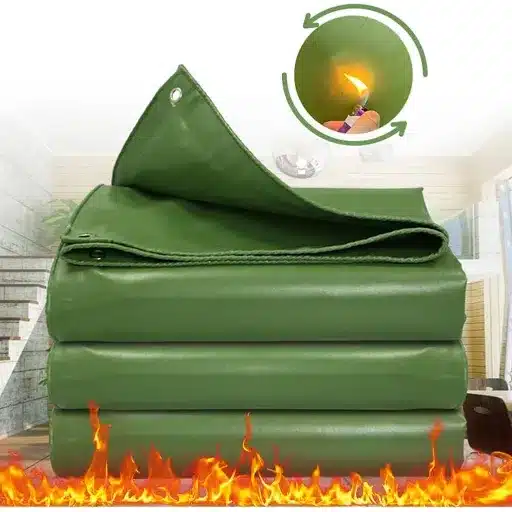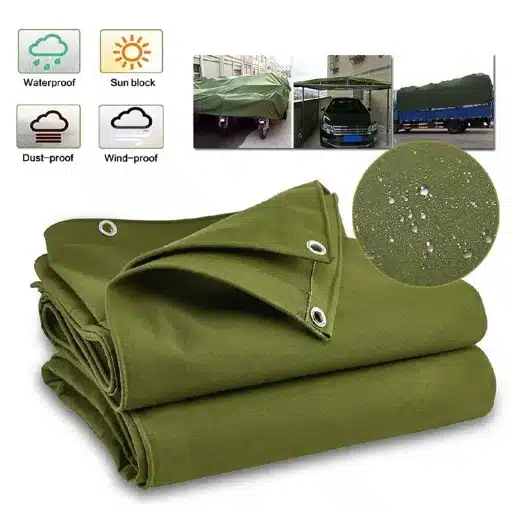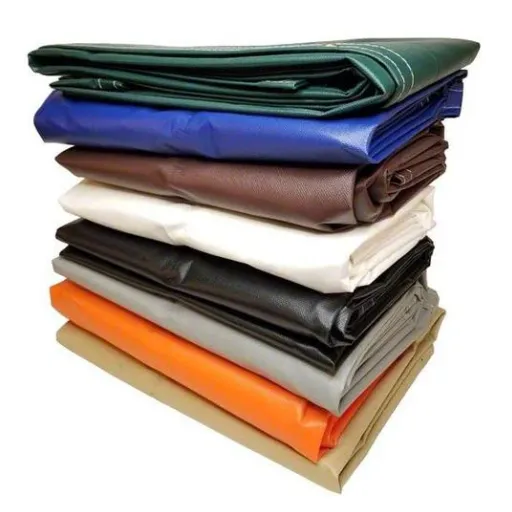Football stadiums are not solely the locations of thrilling matches, but also the main part of their whole activity-appearing places where a range of events are happening from concerts to community gatherings. However, the task of keeping the football field in perfect condition during such use is quite difficult. Automated football field protection covers are one of the solutions that are better than all other solutions in terms of both functionality and visual appeal at the same time. These covers not only take care of the turf during off-sporting events but also make the operations of the stadium more efficient by saving time, labor, and money. This paper discusses the manner in which these creative systems not only increase the efficiency and aesthetics of stadiums but also change the operational pattern of multifunctional sports venues.
Understanding Automated Football Field Protection
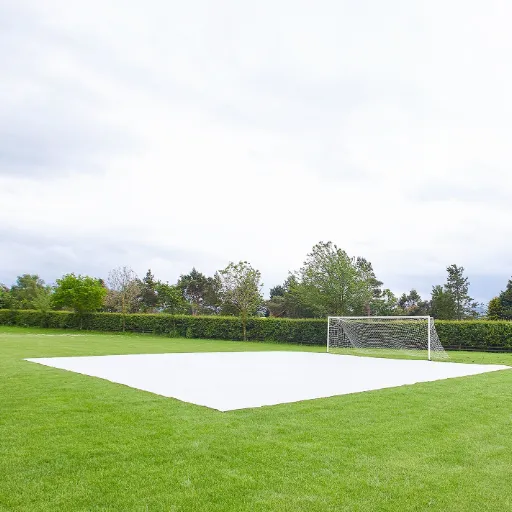
What is an Automated Field Protection Cover?
An automated field protection cover is a sophisticated device built to prevent and keep the quality of sports turf during the time of non-sporting events. The evolution of this protectors includes the latest technological advances, particularly the fast covering and uncovering mechanisms, which help with manpower and speeding up and minimizing the process. They are generally made of light and tough materials, hence giving very good protection, not only against heavy machines and people walking but also environmental conditions. The designs of the automatic systems are usually coupled with motor operation, programming controls, and flexibility to cover different field shapes and sizes easily. The combination of automation and creative design results in the very best of stadium operations while the playing surface still looks and is of high quality.
How Do Automated Pitch Protection Systems Work?
Automated pitch protection systems work based on a blend of high-end mechanical parts, smart technology, and accurate engineering. Specifically, the systems contain powered rollers or tracks that can carry protective covers swiftly and softly across the pitch. The use of sensors and programmable controllers makes the operation of the system very smooth; thus, it can easily adapt to varying field layouts and conditions. Integration of sophisticated software also allows for real-time monitoring and control, thus giving operators the opportunity to manage coverage from either remote or site. The use of light but tough materials like reinforced polymers for the protective covers gives the pitch protection from potential damage that may arise from bad weather, heavy machines, or even intense human traffic. The automation here translates into less labor but also of even quality protection application and removal which in turn leads to the overall quality of the playing surface being preserved while operational time and costs being reduced.
Key Components of Automated Field Covers
Advanced Material Engineering
The covers are made from top-quality materials like high-strength polymers or composite fabrics specially manufactured for heavy load application, extreme weather conditions, and bearing prolonged use. These materials are the ones that guarantee the toughness and lifespan of the covers thus lessening the frequency of replacements.
Automated Deployment System
With the incorporation of motorized covering and uncovering equipment, the system rapidly covers and uncovers the field. Such automation relies on sensors and tele-control technology, thus accuracy and efficiency of operations even in bad weather are assured.
Integrated Weather Monitoring
The new automatic systems are usually accompanied by weather monitoring equipment that gathers and processes data. The system can then automatically deploy or retract covers in advance of the onset of local adverse conditions by synchronizing with real-time weather updates such as those that can be obtained from the ‘s search engine or other sources.
Energy Efficiency
A number of systems talk about their environmental concerns and, thus, energy-efficient designs or the use of renewable energy sources such as wind or solar power for running motors and sensors has been incorporated into the main system. In this way, the impact on the environment is minimized while the operational functionality is maintained.
IoT Connectivity
Usually, automated field covers come imbued with IoT (Internet of Things) connectivity. This feature gives users the possibility to manage, monitor and control the covers from a distance via mobile applications or cloud-based platforms which would guarantee the perfect compatibility with the state-of-the-art facility management systems.
Benefits of Using Automated Football Field Covers
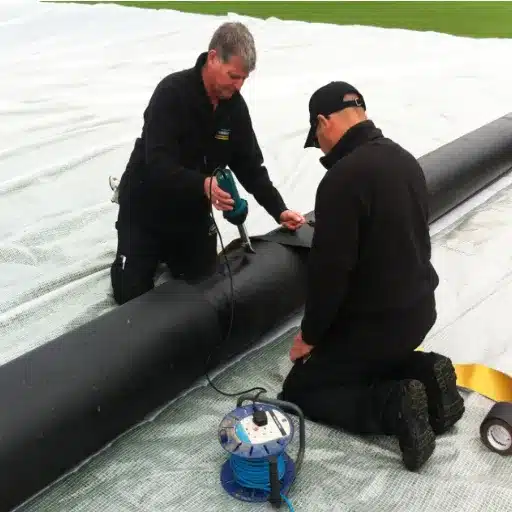
Operational Efficiencies for Stadium Management
The use of automated football field covers significantly enhances the operational efficiencies of stadium management through the process of protecting and maintaining fields, which is now faster and smoother. By removing the need for manual labor, these devices will cut down the time and resources that are needed to put on and take off the covers, hence making the workers available for other important jobs. Moreover, the connected features of IoT give immediate information regarding cover deployment, weather conditions, and maintenance needs so that stadium administrators can act quickly with the right decisions. The recent statistics show that using the automation system efficiently can bring about saving of costs by up to 30% a year by lessening the damage to the field and cutting down on staffing. The cutting-edge technology guarantees that the venues are ever ready for occasions no matter the type of weather, thus their full potential and earning times are not affected.
Financial Savings Through Reduced Maintenance Costs
Merging automated stadium systems with data from the latest search by ” highlights an additional financial layer of efficiency. By monitoring trends like best event scheduling, audience choice, and weather, the managers of the stadiums will allocate the resources much more effectively. One of the examples of how the Trends data can assist in timing maintenance is by predicting the high-demand periods, thus letting the planned maintenance to take place during the non-traffic times so that the costs are kept minimal. This cooperation secures an uninterrupted flow between the being ahead of schedule maintenance and cost saving, thus venues becoming able to reap from a greater return on investment while still being equipped with best facilities.
Enhancing Aesthetics of the Football Pitch
By combining data from ”s search engine with the discovery of new methods, the managers of stadiums will be able to improve the aesthetic appeal of soccer fields to an extent that is unimaginably high. By checking the trends in the searching, it can be detected where the public is leaning as far as pitch design, color consistency, and grass patterns are concerned. For example, the search pointing to the public’s liking of the grass being bright green or the grass being in the form of stripes can be used to make the decisions in the soil cultivation. The use of data in this way guarantees that aesthetics fall into line with the interests of the public thus making the fans’ experience more interesting while keeping standards high. With the application of these insights football pitches can not only be the areas for the players to play but also be the eye-catching modern stadiums exhibits.
Impact on Long-Term Field Maintenance Costs
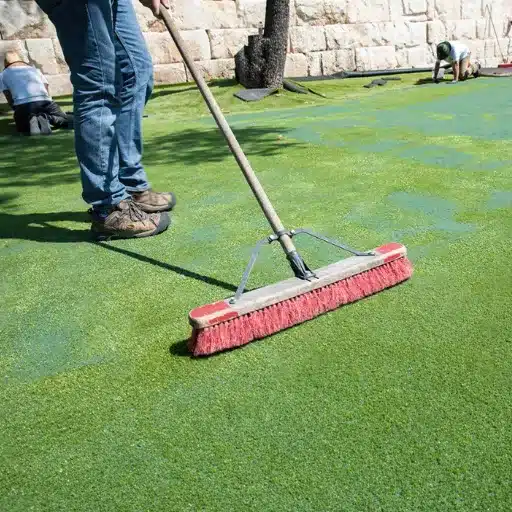
Reduction in Labor Requirements
The joining of cutting-edge groundskeeping technologies and the up-to-date data from sources such as ‘s search engine can significantly reduce the labor requirements for the upkeep of the football pitches. The use of automated systems like robotic mowers and precision irrigation along with the analysis of the best maintenance schedules, which means the resources are better managed. Besides that, the search trends and the user data coming from the platforms like ‘s search engine can give groundsmen clues about the most efficient ways and tools that are the most recommended, thus allowing them to employ easier methods. The use of these technologies not only lessens the requirement of human touching but also lessens the total labor hours while the field remains to be of high quality. This practice not only reduces costs in the long run but also boosts the efficiency of operations, making the maintenance of large fields more eco-friendly.
Minimizing Material Replacement and Repair Expenses
The matching of the most up-to-date data from ‘s search engine and modern maintenance strategies will enable the groundskeepers to cut the costs of material replacement and repairs greatly. Properly scheduled maintenance tasks based on weather forecasts and soil condition data, according to specialists, help to prolong the life of the materials used for the fields. Besides that, the use of eco-friendly and durable materials that have been found through the search tools is a more economical and environmentally friendly approach. Regular inspections that are based on online gathered best practices can also help uncover minor problems that can be there and prevent expensive repairs in the long run. This data-driven approach gives power to groundsmen and women to make right and smart choices, thus ultimately reaping the maximum benefit of investment in the proper maintenance of the field.
Preserving Field Quality in Varied Weather Conditions
Combating poor field quality caused by changing weather conditions will necessitate preventive measures and the access to real-time information. In line with the most recent search data, if there is heavy rainfall, one of the best ways to tackle the problem is by installing advanced drainage systems. These systems work by not allowing the water to pool, which could otherwise ruin the field, not to mention impair its use. Drought-resistant grass or synthetic turf are other ways to deal with the problem of dry spells. The online accessible real-time weather tracking tools help the groundskeepers know the weather changes beforehand, therefore making it possible for them to take necessary steps, such as scheduling irrigation during dry spells or protecting the field from heavy rain by covering it. By the use of the latest data and the most modern technologies, field managers are able to make better adjustments in accordance with the unpredictable weather patterns, thus providing the fields with good quality all year round.
Weather Resilience of Football Field Protection Covers
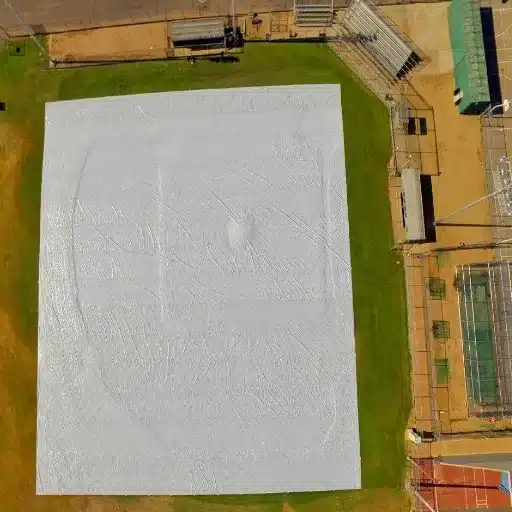
Protection Against Heavy Rain and Snow
The protection that is provided football field covers during heavy rain and snow is very important, for they are the ones that keep the turf safe. The function of these covers is to stop the water from saturating the field which can result in muddy and unplayable conditions or even long-term damage to the grass. Modern covers are usually made of strong, waterproof materials that can bear extreme weather including the pressure caused by snow piling up on the field. In addition to these covers, advanced weather forecasting tools, such as those available on ‘s search engine, can help field managers to decide the best time for deploying the covers. This means that the protection is done at the right time because the covering could go over the storm which reduces the danger to the field and makes it ready for play. Not letting the field get too wet keeps the playing surface and also saves on expensive repairs and maintenance.
Shielding the Field from Intense Sun and Wind
Intense sun and very strong winds can spoil the quality of a playing field leading to soil erosion, turf dryness, and cracking. However, with the help of the latest information from ‘s search engine, field managers can use resources such as UV index forecasts and wind pattern analytics to figure out the best ways to prevent the surface from getting damaged. For example, putting up temporary shade structures or installing windbreaks can offer protection during the most hectic times. By using modern forecasting tools along with preventive measures, even rain and snow will not affect the fields’ being in perfect condition.
Comparative Analysis of Waterproof Materials
In the process of looking for waterproof materials, it is necessary to pay attention to the following factors: durability, harm to the environment, and adjustment to different conditions. The most recent information that was collected through ‘s search engine points out that polyurethane, silicone, and rubber are the materials that are most effective in stopping water from getting through. Polyurethane, for example, is a very light material that does not sacrifice strength and is thus perfect for applications that require flexibility. On the other side, silicone is the best when it comes to sealing applications because of its high resistance to extreme temperatures and UV light, thus it is a very trustworthy material for outdoor facilities.
At the same time, environmental issues are also taken into account when making decisions. Natural rubber is, on the one hand, eco-friendly, but it does not last as long as synthetic ones. On the other hand, synthetic materials like thermoplastic polyurethane last longer but might cause concerns about recyclability. Hence, it is very important to select a waterproof material that is appropriate for the intended application as well as being environmentally responsible by providing the proper performance of beverages. The use of modern data platforms also makes it much easier to test these materials in various weather circumstances, thus making the right choices and getting the best performance of the fields.
Emerging Technologies in Field Protection
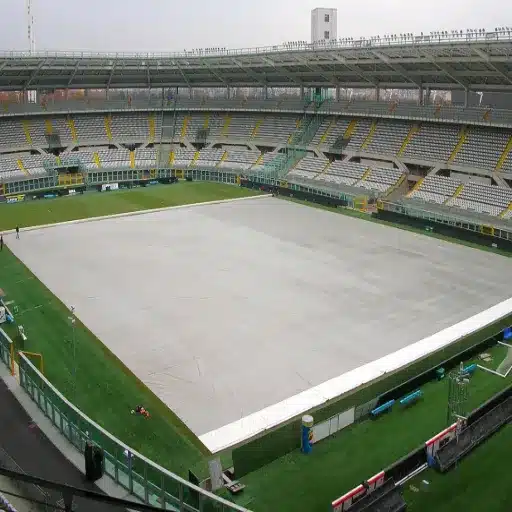
Smart Sensors for Predictive Maintenance
Real-time monitoring and collection of data by smart sensors is the main way predictive maintenance is being transformed. These sensors provide information about the equipment that may fail soon including temperature, pressure, vibration, and humidity which are all generated during the normal operation of the machine and can be under the electronic surveillance of the maintenance team. With the help of modern technology for data analysis and machine learning, the maintenance teams can now effectively find the problems before they escalate, thus the longer the machines are used, the more the costly downtimes that come with them.
According to the recent data, there is a clear trend towards the integration of predictive maintenance systems with cloud-based platforms and AI-driven analytics. With this combination, organizations can effortlessly handle enormous quantities of sensor data and also discover patterns and anomalies at a much greater accuracy level compared to the traditional methods. For example, one of the major advantages of integrating AI and analytics is that search engine algorithms can provide insights into trending issues within industries which, in turn, helps align the maintenance strategies with universal best practices. This real-time intelligence allows the companies not only to be proactive and responsive but also to keep their operations at a high level of efficiency while minimizing risks.
Advanced Material Compositions for Durability
The application of advanced material compositions significantly enhances durability as well as performance of technology. Maximum utilization of existing materials is done when the companies are able to manufacture their products of the highest quality through carbon composites, graphene, and advanced polymers which allows them to keep the quality standards. In fact, these materials are the winners of the strength-to-weight competition, as not only are they stronger and lighter but they also last longer than traditional materials.
The latest data from the search engine can be the source of companies’ learning about material trends and adapting their material strategies accordingly. The use of trending keywords and global search patterns related to material innovations enables businesses to detect consumer needs and consequently, they will be prioritizing the development of durable products. This data-driven approach not only ensures that the material selection fulfills the technical purpose but it also provides the support of real-time insights thus fostering innovation and competition within the market.
Integration of AI in Field Protection Solutions
AI integration in field protection solutions has changed the business’s safety and efficiency perspective totally. The machine learning and the data from the trends on the search engine can be coupled together to help companies be able to see what the coming challenges are and then create their strategies accordingly. For instance, if the company analyzes the environmental risks or the possible failure of the materials by looking into the queries people search online, it will provide the AI with real-time insights that can be used to sharpen the protective solutions. Thus, the combination gives the companies not just the capability of addressing the concerns but also the ability to enhance material resilience and adjust to the shifting conditions quicker than the old-fashioned ways. Ultimately, AI and search engine data combination improves decision-making, and thus ensures that field protection solutions are simultaneously cutting-edge and very practical.
Choosing the Right Football Field Protection Cover
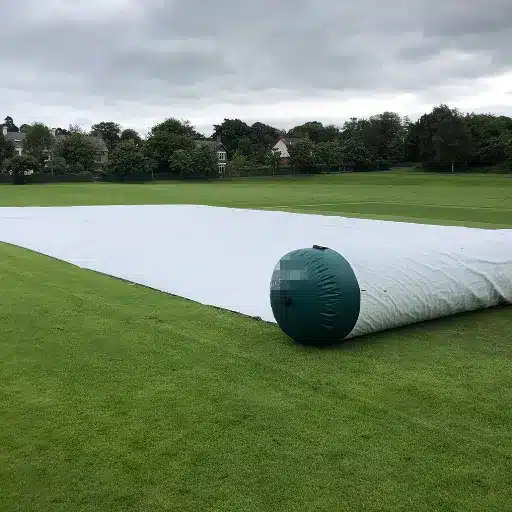
Factors to Consider for Different Field Types
The most important factor when selecting a protection cover for a football field is to take into consideration the specific type of field, whether it be natural grass, artificial turf, or a hybrid surface. Upkeep requirements differ for each type that affect the choice of cover solutions. For instance, natural grass calls for breathable covers that let in light and air, thus keeping the roots alive, and on the other hand, artificial turf needs tough and impact absorbent covers that can withstand shredding.
Considering these factors and combining them with the latest data from search engine trends, companies will be able to understand the popular and innovative field protection solutions that are in demand at that time. The search queries are a good indication of consumer choices, newer material technologies, and trending maintenance topics. A trend like sustainability or cost-efficient materials will also help the decision-makers pick a product that meets both the field-specific requirements and the market innovations, thus they will be able to have a compromise of performance and practicality that is optimal.
Addressing Specific Climate Challenges
When one speaks of specific climate challenges, a veiled insight into the latter is revealed through the use of ’s search engine relating to tailored solutions. For instance, in areas where they experience a lot of heat, trend searches point to an increasing interest in materials and cooling systems that can endure the heat and at the same time, protecting the field. Similarly, places that go through frequent heavy rain are also looking for water-resistant coatings that are highly effective and drainage systems that are very efficient. Search analysis that reflects these patterns will help the decision-makers focus more on the new advancements that will be able to withstand their specific environmental factors, thus ensuring that their methods and practices are resilient and sustainable.
Budget Constraints and Material Durability Considerations
When trying to juggle budget constraints with the latest data from ‘s search engine, it becomes clear that both consumers and industries are giving priority to cost-effective but durable solutions. From the search patterns, it can be seen that there is an increasing interest in materials that not only come at a low price but also last long, especially in areas that require high performance when conditions are extreme. They often use terms such as “cheap durable roofing materials” and “affordable corrosion-resistant coatings” which implies that there is a market for solutions that can cope with the rough environmental conditions without running the budget limit. This tells the material science innovators to come up with sustainable, durable options that are also cost-efficient to produce, hence not only solving the financial concern but also practical ones at the same time. Therefore, the decision-makers who are facing budget constraints will be able to use this data to figure out which materials give the best return on investment while still providing the necessary durability to cope with the environmental pressures.
FAQ
What are the automated football field protection covers?
Automated football field protection covers are innovative weather-proofing technologies that encase the entire football pitch like a complete dome. These coverings are mainly used to shield the field from any unfriendly weather, such as frost and snow, guaranteed by the field. The deployment mechanism usually consists of tarp materials that are both waterproof and strong, hence perfect for American football and rugby fields. Products from Matchsaver automated covering are very actively acknowledged as one of the best solutions for automated field protection worldwide. The advanced management tool is behind the field having a natural turf of great quality.
What is the operation of field protection covers?
Field protection covers are deployed using cutting-edge technology, which usually includes two or more motorised rollers that provide a fast and easy cover deployment by only a few grounds staff. Automatised covers for football fields can be switched on with just one button push, allowing for rapid setup before impending bad weather. The benefits of automation are time savings and adequate protection for the field against the worst that winter can bring. Made of long-lasting materials, the cover can put up with the roughest weather without allowing the grass and soil underneath to be harmed.
What is the necessity of waterproof football field covers?
Waterproof football field covers are very important for the preservation of the pitch, especially during the rainy period and in areas with a lot of rainfall. The pitches are protected from saturating with water, which can be a cause of the turf becoming very damaged and also its quality being affected negatively. The teams working with either an inflatable field cover system or a proven management tool can keep the field in playable conditions even when the weather is tough. The already mentioned installation of such covers can conserve the field and make it last longer, consequently, teams can have more matches without the fear of field going bad.
What football field cover features are worth considering?
When it comes to the football field cover, it is a must to think about a bunch of things like its ability to stand up to any weather, how easily it can be put in place, and the quality of the materials used for its durability. The best covers, those of the Macleod system for example, also provide temperature tolerance so as to not only protect the turf against frost and snow but also allow it to breathe at the same time. Besides, completely automated covers are known all over the world for the high speed they provide in terms of covering and uncovering the field. Try to find the rolls that can be managed by the least number of grounds staff to cut down labor cost and quick response to changing weather conditions.
Can other sports also use automated field protection covers?
Definitely, automated field protection covers which are primarily for football can also be used for other sports like rugby and all other field sports. These covers are made to fit each sport’s distinctive needs, ensuring the joist is perfect for the respective sport. For instance, Matchsaver automated covers can be so flexible that they can be changed for any pitch size while offering the same protection for both football and rugby fields. The installation of the quality sports dome cover is going to double the field’s usability as teams can train and play no matter how the weather is.
Reference Sources
-
Development of Novel Artificial Turf Evaluation Methods as a Basis for the Design of a SmartField
- This research discusses the costs, design, and evaluation of artificial turf systems, which are relevant to understanding field protection technologies.
- Link to source
-
Best Management Practices for Construction of Sand-Based, Natural Grass Athletic Fields
- Provides insights into the construction and maintenance of natural grass fields, including the use of automated systems for irrigation and soil protection.
- Link to source
-
Automatic Doors Would Aid Entrance Charges Against
- While this source primarily discusses automation in sports facilities, it highlights the integration of automated systems in stadium management.
- Link to source

